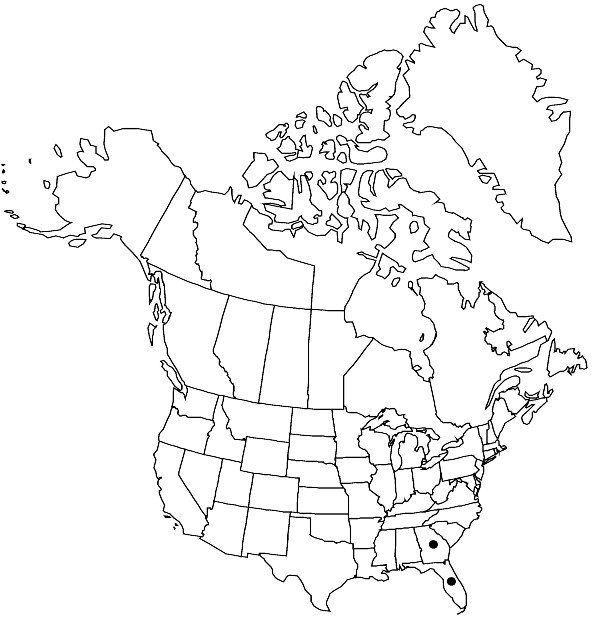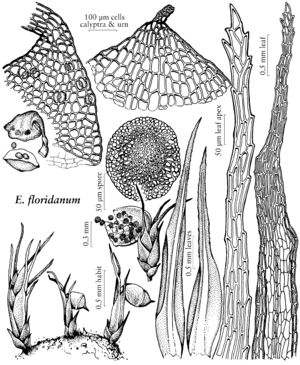Eccremidium floridanum
Bryologist 84: 531, figs. 1–10. 1981,.
Leaves loosely erect, subsecund, ca. 1 (proximal) to 1.6 (distal) mm, longly subulate-acuminate from a concave, lanceolate base; margins sharply serrate above the shoulders; costa excurrent, filling the subula, often weak or absent near the insertion; median cells oblong-rhomboidal, 43–66 × 12–17 µm, firm-walled, becoming larger at base. Sexual condition paroicous. Seta stout, arcuate, ca. 1 mm. Capsule laterally emergent, pendulous, ca. 0.7 mm (including operculum); operculum dome-shaped, short-apiculate. Calyptra weakly prorulose near apex. Spores subreniform, 67–100 µm, granulate-tuberculate on distal face, the ornamentation becoming fused and ± ribbed on proximal face.
Phenology: Capsules mature Nov–Feb.
Habitat: Sandy or sometimes clay soil in open, disturbed sites, often in areas that are wet part of the year and quite dry other parts of the year, fields and roadsides, thin soil over rock outcrops, around margins of Taxodium swamps
Elevation: low elevations (0-70 m)
Distribution

Fla., Ga., South America (Brazil)
Discussion
Eccremidium floridanum is known in the flora area only from the Panhandle of Florida and southern Georgia. It may well be more widespread in the Southeast but appears to be ephemeral, and the plants often die down by early spring, prior to the arrival of most collectors. The species may be the same as the Australian and South African E. exiguum (Hooker f. & Wilson) Wilson, with which it has much in common. In the field, American material looks different from Australian material; in the former the leaves of fresh plants are decidedly more subsecund. The distinctive characters of this species include its minute size, arcuate setae and laterally emergent capsules dehiscent near mid urn without a peristome.
Selected References
None.
